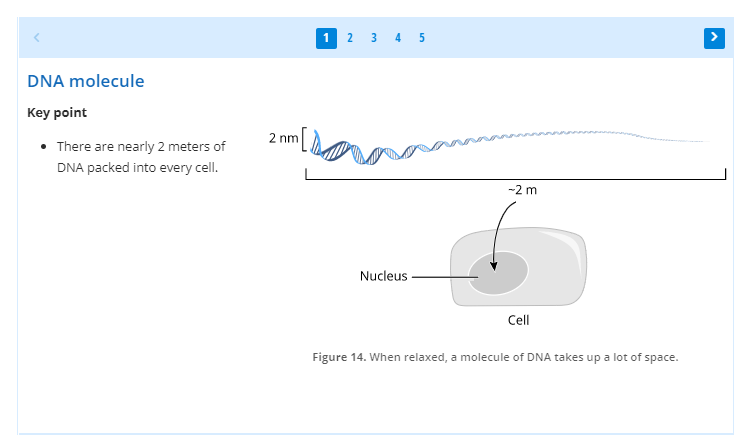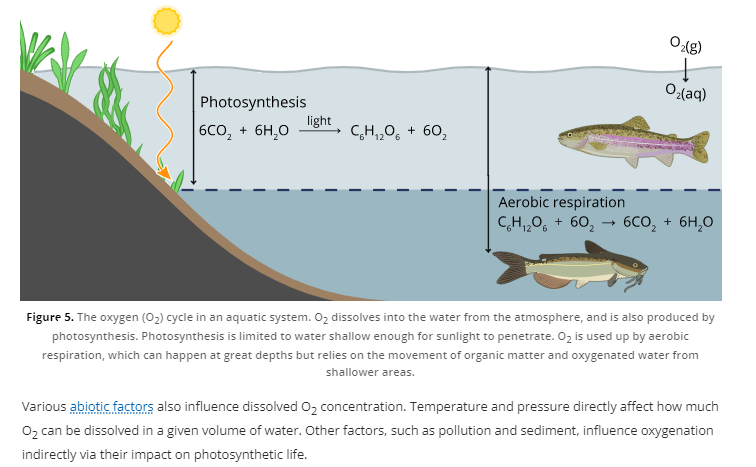

How do you teach your students about DNA and the mechanics of protein production? Do you want to be able to easily teach topical labs related to pollution and climate change? Look no further!
We’re proud to announce 5 new labs in the Lt Biology Collection, developed in partnership with Vernier Software & Technology.
These online biology labs expand the existing collection while continuing to align with the core competencies outlined in the Vision and Change action report (AAAS, 2011).
All of these new labs are well-suited for both remote learning and in-person teaching environments, due to the use of model activities and/or example data.
DNA and proteins
We’re honing in on molecules! Three of the five new labs focus on DNA replication, transcription, and translation, and how to determine the protein concentration of a solution.
- The DNA Structure and Replication lab details the structure of DNA and leads students through the replication process. Students make models of DNA to explore why DNA forms a double-helical shape and how nucleotides fit together.
- The From DNA to Protein lab continues working with DNA and details the processes of transcription and translation. Students replicate these processes with paper models to show how proteins are produced from information provided in DNA. The lab also discusses how mutations can lead to diseases, like sickle cell anemia.
- The Macromolecules: Proteins lab lets students use the Go Direct® SpectroVis® Plus Spectrophotometer to measure the protein concentrations of different solutions. Students then compare the Bradford and Biuret assays to see how each method detects proteins and amino acids.
Sunlight and climate
It’s important that students see real-life issues reflected in their lab work. For this reason, the final two new labs have students collect temperature and dissolved oxygen data that can be used to obtain a big-picture view of our world.
- The Exploring the Greenhouse Effect lab guides students through the process of how heat is trapped by Earth’s atmosphere. Students set up mini greenhouses and use Go Direct® Temperature Probes to examine how heat is trapped by gases, before relating this back to conditions on our planet. The extension activity and albedo case studies help form a cohesive picture of how the amount of energy that reaches our planet affects the climate - and what happens when the concentrations of greenhouse gases increase.
- The Measuring Primary Productivity lab is a two-day experiment that allows students to see how water depth affects photosynthesis. Students expose water samples to various amounts of light and use a Go Direct® Optical Dissolved Oxygen Probe to determine how much photosynthesis and respiration occurs, before exploring how the level of photosynthesis undertaken by primary producers affects the ecosystem. This lab includes a practical, inquiry-based extension that allows students to explore advanced concepts related to primary productivity. An additional, theoretical extension allows students to interact with interdisciplinary issues related to carbon accreditation, eutrophication, and rewilding.
Theoretical extensions
The Measuring Primary Productivity lab has a new type of extension - theoretical! Students examine the ideas of carbon accreditation, eutrophication, and rewilding in an extension that focuses on interdisciplinary and real-world applications of primary productivity.
These open-ended activities allow students to explore the nuances of how science interacts with other fields, and provide the opportunity to learn from classmates with different experiences. Students will have to consider different points of view and interests when answering questions and devising solutions.
For example, chemicals used as pesticides and fertilizers have begun to leach into the river by a rural farming community. The farmers know the chemicals cause environmental damage, but feel they have no choice but to use them if they want to support their families.
However, the biologists consider the local ecosystem to be the top priority and argue that the pollution in the river is threatening unique fish species.
Social workers are concerned that the chemicals may cause health issues, as the local community can’t afford to go elsewhere to buy food and rely on the farmers for crops.
Students are first asked to explain how primary productivity and the local ecosystem are affected by this leaching, and then asked who they think should decide how the community responds to the issue. Can they address the concerns of all the residents?
It’s important to note that in this scenario there is no ‘right’ answer - the point is to understand how biology and the many facets of society interact. Specifically, this exercise helps students describe how biological research affects different stakeholders and its impact on society.
Vision and Change alignment
Since we’ve completed another section of the collection, we wanted to take a step back and make sure the collection as a whole is aligned with each of the six competencies mapped out in the Vision and Change report.
These six core competencies reflect the ability to:
- apply the process of science
- use quantitative reasoning
- use modeling and simulation
- tap into the interdisciplinary nature of science
- communicate and collaborate with others
- understand the relationship between science and society
The Biology Collection as a whole addresses all six categories, and emphasizes the following sub-topics:
- question formulation
- data evaluation and analysis
- problem solving
- communication
- scientific thinking skills
- connecting knowledge
- model application
- science’s impact on society
- numeracy
- collegial review

The Lt Biology Collection enables hands-on data acquisition.
Some of these competencies are more ubiquitous throughout the collection. Lt facilitates authentic data collection, making data evaluation and analysis a common thread. Other competencies are more heavily integrated into specific labs. For example, the DNA labs represent a great opportunity to explore how science and society influence each other.
What will these labs do for my students?
Our out-of-the-box labs teach relevant biological concepts with a focus on practical skills (like lab safety, communication, and report writing). Students are expected to link new concepts with previous knowledge and understand how these concepts can be applied in real-world situations.
The Lt Biology Collection is designed with confident, competent biology students in mind.
What's next?
Keep an eye out for the next instalment of Lt Biology labs in 2022, which will involve biotechnology topics, including PCR and CRISPR. These labs provide an opportunity to deeply explore ethics in science, rounding out a comprehensive biology curriculum.
Additional resources for educators:
Talking Teaching: Engaging remote biology students »
Emergency Remote Teaching: How to quickly move biology courses online »
Lesson Design: How to promote the six core competencies for undergraduate biology students »
Helping Your Students to Bloom – Fostering higher level thinking in introductory biology »
Celebrating Darwin Day – Preview Lt's new Population Genetics and Evolution Lab! »










